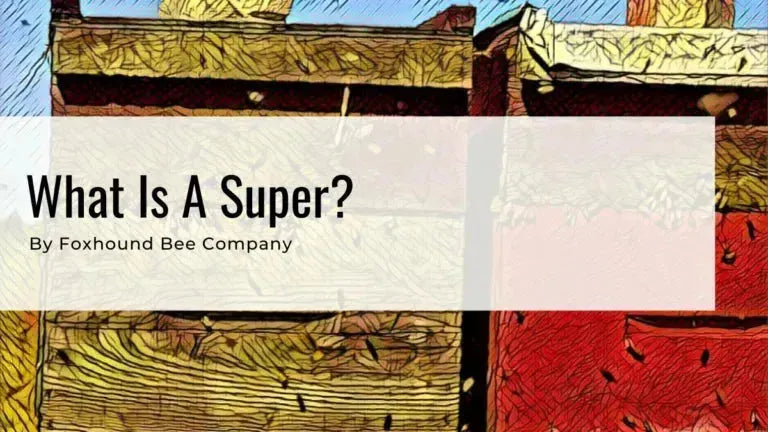

Beekeeping is hard enough, and with all the terminology used by beekeepers, it can be even harder. We do our best to avoid using confusing beekeeping terms and stick to the basics. Especially when talking to beginner beekeepers.
But if you are asking yourself, “What is a honey super?” we can help with that. Using jargon is actually one of the things on our list of ways beekeepers make it hard on themselves.
A "honey super" is an extra box added to a beehive for honey storage, placed above the main hive structure.
Honey supers can be of various sizes, including deep, medium, and shallow, each affecting honey storage capacity and weight.
The term "super" is derived from "superstructure," referring to any additional boxes used during times of nectar collection.
Understanding the Term "Honey Super"
Super is a word that is thrown around a lot by beekeepers, and if you aren’t into beekeeping, you probably wouldn’t know it and you would just call it a box
We have a really great blog that breaks down all the parts of a beehive as well.
Honey supers come in various dimensions, and measurements are specified in imperial and metric units to ensure compatibility and standardization within hive parts. The honey super can be different sizes, but it generally will be for one use.
Super is short for superstructure, which refers to the boxes placed on a beehive for bees to store honey. Historically, a super was always a medium, 6 5/8-inch tall box , or a shallow 5 3/4-inch tall box. Both are traditionally referred to as supers, exclusive of the deep 9 5/8-inch box on the hive’s bottom.

Since the word super is short for superstructure, it could actually mean any size box that is extra and in addition to the “ 365 hive “. It could be applied to any box, but if a beekeeper is calling a deep box a super, they are likely confused.
This is what we mean by that: there are a certain number of boxes a beekeeper leaves for the bees to live in for 365 days a year. Depending on your area, this could be 1 to 3 boxes, with 2 boxes being the most common setup.
Different Box Sizes and Their Uses as Honey Supers
The boxes on the hive year-round could be called the “structure”. This could be called "the brood nest".
Only during times of lots of nectar collection are additional boxes added, which would be your “super” structure. During times of a lot of nectar production by the bees, beekeepers will call that the nectar flow or honey flow.
Whatever size box is used, deep, medium, shallow, 10-frame , 8-frame , or 5-frame, these boxes can be considered supers. The height of these honey supers directly affects their honey storage capacity, with shallow, medium, and deep supers offering different weights and uses in honey production.
In recent years, it has been less common for beekeepers to use deep boxes for excess honey storage and more common to use medium boxes exclusively for their whole hives. The box size does not dictate what a bee will use it for.


Typically, deep boxes or “deep hive body” are used on the bottom of the hive by backyard beekeepers. In some commercial honey operations, deep boxes are used for the queen to lay eggs in as well as for honey boxes.
This is the most efficient and cheapest option for bees and beekeepers, but it is extremely heavy. Using deep boxes for the entire hive can be hard on a beekeepers back.
Deep supers, while capable of holding a large quantity of honey, can be the heaviest and most challenging to manage due to their weight.



